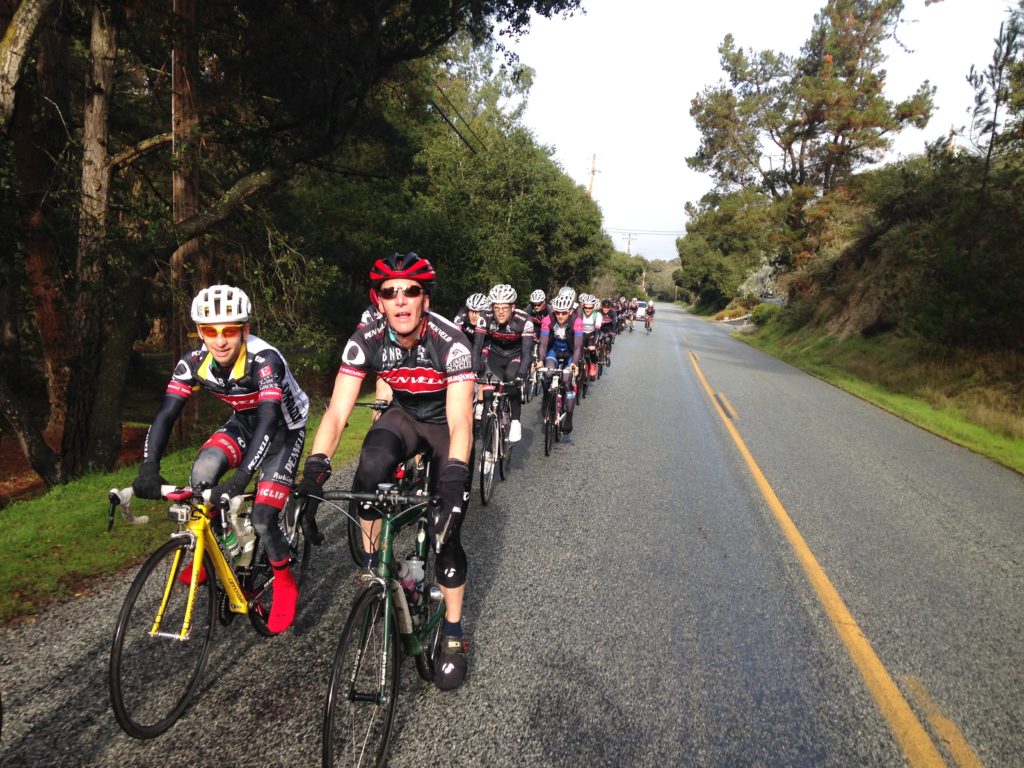When I was in ninth grade I lived in a little tiny town in Southern Colorado.
La Veta was all of 600 people, zero stoplights and only a couple of paved streets. It sits at the base of the Wahatoya, two 13,000 foot peaks just south of town.
We played 8-man football against teams like Simla, Sierra Grande, and Aguilar. Most everyone played both ways. I was the 105 pound freshman running back and defensive end who was mostly used as fodder for the varsity on practice days.
Wrestling was a better fit and my coach was also my history teacher. I spent the last couple of months of school that spring living with Mr Denton, his wife and two kids, a few miles outside of town where the wind seemed nearly always on. My mom and step-dad had moved to Colorado Springs for a new job, but didn’t want to take me out of school. I remember having elk steak, going to the Southern Baptist church on Sundays and helping with finish work on Rodeo belt buckles. I learned to rope hay bales in anticipation of roping calfs sometime and I burned the crap out of my index finger and thumb grabbing a hot muffler off of a lawn mower or splitter.
Mr Denton had a side business making custom order belt buckles. He was actually quite an artist, quintessential cowboy painter. His buckles were sought after far and wide, which meant lots of finish work on buckles. In total I probably did less than 8 hours in those weeks, but it was memorable in that I saw real craftsmanship on display, and man I wanted a buckle! Thing is, you gotta earn a buckle. His kids had a slew of buckles for barrel riding, roping, etc, I’m sure. He didn’t offer and passed before I could order one as an adult. I still want a buckle.

Cowboy Legend Jim Shoulders Championship buckle is amazing. Don’t know the artist, but Mr Denton was on par I know.
I have written a bunch of stuff over the last 10 years or so, this is an archive post – a combination of two articles from PezCyclingNews (1, 2) a few years back. Interesting to see some of the current iterations of training metrics and analysis options coming on line. Analysis stuff like INSCYD and WKO4, Best Bike Split, etc…then mix in the rise of aerodynamics/biomechanics on the fly and more telemetry to boot!
This looks at some of the science behind the terminology and factors influencing “fatigue”.
Part 1 –
Lactate and Lactic Acid production are routinely offered as the seemingly natural cause and effect parameters that cause fatigue and decrease in performance, but are they really the source of the problem?
By Matt McNamara
If you’ve read anything about training in the last ten years you’ve probably come across the idea of Lactate Threshold and a discussion of how lactic acid production limits performance. The argument often goes something like this:
“As exercise intensity increases lactic acid production rises at a rate that, eventually, overwhelms the bodies ability to buffer this build-up and a decrease in performance naturally follows.”
Heck, I’ve repeated the mantra myself time and again over the years, despite KNOWING that it was an incomplete explanation of what actually happens. The truth is it provides a simple, though not wholly inaccurate, way to explain the well-documented trends of decreasing performance with increasing lactate concentrations. The idea of cause and effect just sort of fit well. So rather than perpetuate mediocre understanding, let’s jump in and learn a bit more:
A Brief, Albeit Incomplete, History
Lactic Acid was first isolated by Swedish researcher Carl Wilhelm Scheel from a batch of sour milk in 1780 (hence the commonly used term “lactic” instead of the far sexier formal name of 2-hydroxypropanoic acid, but I digress). Otto Meyerhoff and Archibald Hill, Nobel Prize winners in 1922, demonstrated that Lactic Acid was actually produced as a side reaction of Glycolysis, a primary metabolic pathway that converts carbohydrate/glucose into pyruvate, in the process converting energy into ATP through a 10-step set of reactions. In the absence of oxygen this conversion is sustained with Lactic Acid. This anaerobic process releases a proton (H+).
This was a key finding as it seemed to offer a cause and effect relationship between lactate production (lactate is, essentially, the salt or base of Lactic Acid) and the extended concept of Lactic Acidosis, or a decrease in pH that results from the release of protons in the system (cell or bloodstream).
This cause and effect relationship was taken as fact by researchers throughout the 20th and into the 21st century. However, in reviewing past and current research, Robergs et al (2004) have shown that there was no actual empirical evidence to support the cause/effect relationship; rather it was largely based on statistical correlation and the reputation of the Nobel Laureates Meyerhoff and Hill (which was richly deserved, I might add).
So, if the cause and effect nature of lactate production and acidosis is not an accurate portrayal of the role of Lactate in the onset of acidosis, and therefore performance, what is?
Debunking Lactic Acidosis
In 2004 Roberg, et al wrote an extensive review of the literature that sought to debunk the long-standing cause and effect relationship between lactate production and metabolic acidosis. Their sixteen page review takes an exhaustive, and somewhat intimidating, look at the true biochemistry of metabolic acidosis.
For example they detail the role of the phosphagen, glycolytic and mitochondrial systems in producing ATP and the differences in how each manages any released protons. They also note the difference in the nature of the proton release in glycolysis depending on whether the carbohydrate was derived from blood glucose or muscle glycogen. Glycogen is less acidifying to muscle during intense exercise.
Roberg then goes on to detail the many benefits derived from lactate production including the alkalizing effect of LDH, Lactate Dehydrogenase, or that it then circulates away the lactate to other areas that need it including the kidney, liver, and heart, for use as a substrate.
Finally, they looked at the role of nonmitochondrial ATP production, via research by Gevers in 1977 and 1979. Gevers established that metabolic processes other than LDH might contribute to the removal of protons in the form of the turnover of ATP via glycolysis. In other words that non-mitochondrial ATP production was likely responsible for metabolic acidosis.
But here’s where lactate threshold based training comes in
Training Threshold
Lactate threshold based training is a great tool. More specifically using the combination of a powermeter and a threshold based training approach is a highly effective way to manage your training.
Andy Coggan recently hosted a webinar on Lactate Threshold via USA Cycling. In addition to a comprehensive look at the establishment, definitions, and relationships of training around one’s lactate threshold. Among the cool takeaways
The first is to see terminology like Lactate Threshold, Maximal Lactate Steady State, Onset Blood Lactate Accumulation, etc as talking about roughly the same range of intensity. It’s likely going to be between about 80-90% of your VO2max for sustained periods of time. This will raise your general metabolic fitness. Further specialization is ideal for targeting specific race preparation
Coggan also noted that it has been shown in a wide array of studies that many other factors and processes contribute to fatigue. Things like epinephrine/norepineprine (adrenaline/noradrenalin), plasma potassium, and cortisol level, etc. often show a similar threshold type profile to that of lactate.
Abiss and Laursen did a comprehensive look at fatigue in 2005. Models to Explain Fatigue During Prolonged Endurance Cycling looked at no fewer than 10 different models of fatigue including the cardiovascular/anaerobic model, neuromuscular biomechanical, thermoregulatory models, and several others. Their net conclusion is that any number of systems may contribute to fatigue in a specific way for a specific situation, but in general the limitation of the system is derived from oxygen delivery to the muscles. Since we established above that metabolic acidosis is not derived from lactic acid, but that lactate production is an important contributor to oxygen delivery, it time to embrace those burning quads and get to work improving that lactate tolerance.
References:
1.Abbiss, Chris, Laursen, Paul – Models to Explain Fatigue During Prolonged Endurance Cycling. School of Exercise, Biomedical and Health Sciences, Edith Cowan University, Australia. 2005
2.Coggan, Andy – Explaining Lactate Threshold. Webinar Presentation. 2010
3.Robergs, Robert A., Ghiasvand, Farzenah, Parker, Daryl – Biochemistry of exercise-induced metabolic acidosis. Am J Physiol Regul Integr Comp Physiol 287: R502–R516, 2004
Part 2 – Lactic Acid Explained
It is a common misnomer that Lactic Acid is the cause of fatigue and cessation of high intensity exercise, yet training plans built around your individual Lactate Threshold are highly effective despite the debunking of the “Lactic Acidosis” rationale. Let’s learn why…
By Matt McNamara
Last month we looked at the intricacies of Lactic Acid/Lactate production and its role in limiting performance. The short summary of that article is to say that Lactic Acid production is NOT the limiter in high intensity exercise, and the science behind that belief was founded on an inferred cause and effect relationship between lactate production and cessation of exercise that, ultimately, proved to be untrue.
While lactate production may not be a limiter, it is clearly a marker of overload and does play a role in athletic development and performance. Lactate Threshold based training, when paired with use of a powermeter, is seen as the gold standard for endurance based performance improvement. So let’s explore the real meaning and value of Lactate Threshold based training.
What Does Lactate Threshold Really Mean?
First off, Lactate Threshold is commonly defined as “the exercise intensity at which lactate production exceeds lactate removal, and thus begins to accumulate in muscle and hence in the blood.” Unfortunately, the definition of what constitutes “Lactate Threshold” is highly variable.
Many researchers establish threshold as the point when lactate concentration rises 1 mmol above an exercise baseline. Others use a fixed value, for example 2.5 mmol per liter, as the threshold point. Still another approach is to use D-max which takes the mid-point between the baseline and maximal lactate concentrations. In the end the most important consideration isn’t the way threshold was determined, so much as the concept of Lactate Threshold (and associated terms) as illustrating the non-linear relationship between lactate concentration and exercise intensity.
It is also important to acknowledge that terms like Maximal Lactate Steady State (MLSS), Onset Blood Lactate Accumulation (OBLA), Ventilatory Threshold (VT), Individual Anaerobic Threshold, Critical Power, etc are talking about roughly the same range of intensity. Each of these, MLSS and OBLA in particular, correlate well with the power training concept of Functional Threshold Power (FTP), which is itself defined as your maximal sustained power output for approximately 60 minutes.
Now that we have a clearer idea of what is meant by Lactate Threshold, and we know that Lactic Acid is not the cause of fatigue, let’s look at other factors that might play a role.
Other Causes of Fatigue
In 2005 researchers from Edith Cowan University in Western Australia set out to do just that. Models to Explain Fatigue During Prolonged Endurance Cycling, Chris Abbiss and Paul Laursen’s comprehensive review of fatigue literature, looked at no fewer than ten different explanations of fatigue.
Abiss and Laursen point out that fatigue is usually defined by the type of research being done. For example, if one is looking into psychological causes then they will tend to classify fatigue as “a sensation of tiredness,” while a biomechanist might look more at changes in force output to qualify fatigue. Fatigue research is also driven by a reductionist approach; those doing the research tend to look for a single ‘answer’ to the question of fatigue.
Among the different paradigms and models explored were the anaerobic/cardiovascular model, the energy supply/depletion model, neuromuscular fatigue, biomechanical, thermoregulatory, and muscle trauma models. In addition the psychological/motivational model, central governor, and complex systems models were also reviewed. A quick summary of characteristics might demonstrate that:
Neuromuscular fatigue tends to be divided into a question of where along the neuromuscular pathway inhibition occurs, while the muscle trauma model seeks to explain fatigue as coming from damage to the muscle itself, or to alterations in the chemical homeostasis.
The biomechanical paradigm seeks to define fatigue as the result of decreased efficiency of motion, where increasing efficiency lowers the production of metabolites (like lactate) and energy consumption, helping attenuate increases in core temperature. This segues nicely into the thermoregulatory model which looks at the role of core temperature and the increased demands on the physiological systems brought about as a result of increased core temperature towards critical points at which exercise capacity is reduced or terminated.
While psychologically no single variable appears to be responsible for motor output alteration due to afferent (outgoing) signals, it is thought that numerous mechanisms are responsible for the subconscious perception of fatigue and alterations in central activation and perceived exertion.
The central governor and complex systems theories seek to explain fatigue as a function of oversight by an as-yet-undefined central mechanism, or through the complex inter-relationship of multiple feedback loops seeking to maintain homeostasis, respectively.
Their net conclusion is that any number of systems may contribute to fatigue in a specific way for a specific situation, but in general the limitation of the system is derived from oxygen delivery to the muscles, especially at high intensity.
To further clarify in the Abiss and Laursen article fatigue was defined as “tiredness and associated decrements in muscular performance and function.” This is an important point as much research has looked at performance to exhaustion. The relevance comes when we look at how to best apply some of the factors above into the creation of a responsible training program. Many of the changes we seek are built around the optimization of oxygen delivery and increasing metabolic efficiency during the training year, so how does Lactate Threshold help?
Threshold As Proxy
An individual’s Lactate Threshold is the single most important physiological determinant of endurance exercise performance. It is trainable, reliable, and a sort of proxy for other important metabolic processes that underlie performance.
For example hormone production, like epinephrine/norepinephrine, shows a similar curvelinear relationship with increasing exercise intensity. Plasma potassium concentration, catecholamine concentration, plasma ammonia concentrations, growth hormone, cortisol and many other elements also demonstrate the same threshold type trends as lactate.
Power at Threshold
Now that we’ve established what Lactate Threshold is, how it is determined, and what processes it parallels, let’s spend a little bit of time on what advantages threshold level training can bring to your performance.
For untrained athletes the Lactate Threshold benefits of training can be seen at a wide range of intensities. Simply getting on the bike regularly will bring about many changes including increased mitochondrial density, blood lactate response, and reductions in lactate concentration at a given intensity.
For the trained athlete however, continuous training at intensities around Lactate Threshold has been shown to be beneficial since the time of the fabled East German sports machine in the twentieth century. The East Germans were famous for doing extended hours of training at OBLA!
In a similar vein, Gorostiaga et al in 1991 compared a continuous training group at circa-threshold intensity to one that did only structured high intensity VO2max type intervals (of the type that are all the rage today) and found some compelling differences. While the VO2max group did show a two fold increase in percentage change in VO2max (16% increase v 8% increase), the continuous training group had a ten fold increase in citrate synthase production compared to the VO2max group (25% increase v 2.5% increase). Citrate synthase is one of the main markers for muscle mitochondrial capacity, and is a good reference for total metabolic efficiency.
Both of these examples (the first decidedly anecdotal) serve to illustrate the value of continuous training at an intensity around Lactate Threshold. This has most recently been termed ‘sweet spot’ training, but the idea has been advocated by Lydiard, Coggan, and others in various forms or years. Typically “sweet spot” is defined as approximately 88-93% of your Lactate Threshold power, however the true measure of intensity should be determined by your ability to repeat them over multiple days in a training block.
These circa-threshold efforts should be at least twenty minutes in length, but can last up to two hours or more for advanced athletes. A key determinant of the duration and intensity is your ability to replicate the workout intensity/duration again the next day. A well prepared, motivated athlete doing 60 minutes at 88-93% of threshold power (FTP), should be able to replicate that workload again the second and third days. If you can’t then you probably went too hard, too long, or don’t have a good estimate of your FTP and need to adjust. My suggestion is to start doing some field testing to establish your FTP and then see what you can do. Have fun and let me know how it goes…
References:
1. Abbiss, Chris, Laursen, Paul – Models to Explain Fatigue During Prolonged Endurance Cycling. School of Exercise, Biomedical and Health Sciences, Edith Cowan University, Australia. 2005
2. Coggan, Andy – Explaining Lactate Threshold. Webinar Presentation. 2010
3. Robergs, Robert A., Ghiasvand, Farzenah, Parker, Daryl – Biochemistry of exercise-induced metabolic acidosis. Am J Physiol Regul Integr Comp Physiol 287: R502–R516, 2004




